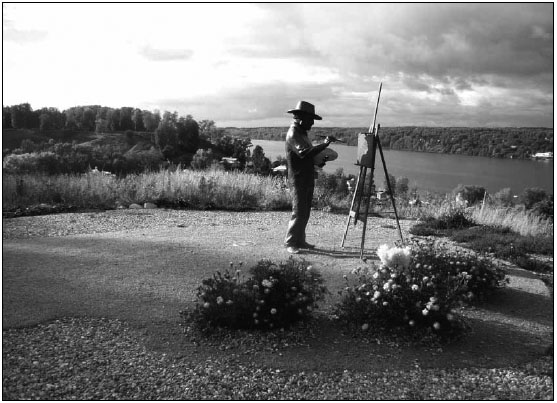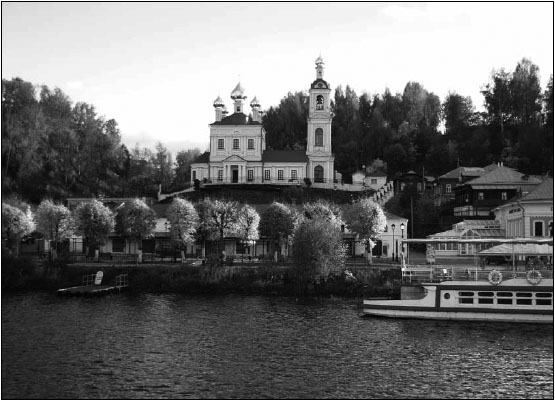From the Rhine to the Volga – Exploring the Russian landscape and soul by doing “Pleinair” painting
From the Rhine to the Volga – Exploring the Russian landscape and soul by doing “Pleinair” painting
by Gerda Reuter and Cornelia Jung, Bonn
Following an invitation of the Russian Lewitan Museum, 6 German and 8 Russian landscape painters met on the Volga for a joint painting as part of the “Green Rush” project. The authors represented the “Kunststudio” of the University of Bonn (G.R.) and the “Volkshochschule “Bonn (C.J).
It is wonderful to sit in nature and to put a motif on the canvas like Macke, Cezanne or Monet did it. But at 8° C and in rain? The cool weather, however, did not prevent 8 Russian and 6 German landscape painters from painting “pleinair” in Pljos on the Volga, from 16 to 30 September 2016. The proud result of about 100 pictures was presented to the Russian audience at a vernissage in the professionally equipped cultural center Pljos. The audience welcomed the painters with curiosity and enthusiasm. In the subsequent exhibition in the Museum of Landscape Painting in Pljos, part of the works were to be seen until 14 October.
The painters had followed the invitation of the Russian Ministry of Culture, the Lewitan Museum, the Ivanovo Oblast and the International Foundation “Russian Province” to live the ancient tradition of landscape painting in the picturesque town of Pljos on the Volga River. Painters and interpreters were accommodated in a good hotel on the Volga. All expenses, except flights and visas, were borne by the organisers and other sponsors, such as Metro. In exchange, each of the painters made the Lewitan Museum a present of two works. The organizers were concerned not only with painting, but also with the cultural exchange between Russia and Germany. In the previous years, Italy, Estonia and France were painting partners.
The first rainy weather did not affect the good mood, because the tasty Russian cuisine, the often heated sauna and the evening social rounds, during which the participants painted and chatted until late at night, compensated the painters. In addition, cultural events such as a concert, sightseeing in the area and a Volga cruise were on the agenda.
The model for Russian landscape painting is Isaak Lewitan, who from 1860–1900 worked mainly in Moscow and Pljos. The Russian professional colleagues are painting in this style of Russian realism, which still take on an important role in Russia: the Russian colleagues do not live badly from their painting and have their customers as far as China. On the German side, expressionist elements were also introduced.
The Russian organisers and painters are very interested in continuing the exchange with Germany. An invitation should come from an official German site. •

